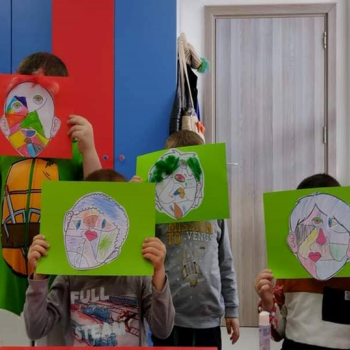
Putting Secondary CLIL into Practice
This well-established course led by award-winning trainer and author Keith Kelly, for teachers of learners 11 and over, presents ideas on teaching content in English as a foreign language. The course develops the three-dimensions of CLIL, namely concepts, procedures and language to equip teachers with the tools they need to prepare lessons best suited to their students’ abilities and needs.
Description
Secondary students are potentially university students of the future looking to work and study in another European country and a CLIL secondary education can equip them with both the skills and the language/s they need to help them do this.
Putting CLIL into Practice is ideal for both subject teachers interested in developing a greater awareness of CLIL methods to help them teach their subject through English but also language teachers interested in bringing more content into their teaching.
The course presents approaches for teachers to deal simultaneously with the three variables of any learning moment, concepts, procedures and language. Additionally, these factors are explicitly associated with learning objectives from secondary curriculum subjects. In this way, participants will be able to see areas of their subject which are more (or less) cognitively demanding and make choices about appropriate procedures and language needed in learning these areas.
Participants will develop an awareness of layers of language in any CLIL classroom (subject-specific, general academic, peripheral) and will be given practice both as learners and as teachers in processing this language.
Additionally, all content input material, whether it is textual or other media, has a specific structure to it which can be exploited in instruments to help guide learners through the input content material. Participants will be given a rich range of experiences of these varied input types. The same guiding structures can be used to support output production.
Course content links to the UN SDGs develops life-skills and has a particular link to sustainable development education.
At the heart of the course is the creation of materials for teachers to use back in their own classroom. This collection is compiled by Keith Kelly and makes an issue of the long-standing FACTWorld Journal (previous issues here) each participant receiving personal copy of the printed version.
Learning objectives
In the course participants will be able to understand the processes involved in learning to learn in a foreign language for secondary students. This includes exploring processes of delivering input content to through a foreign language and supporting students in their output production through writing and speaking. It also requires an understanding of how language works in the content curriculum in its different forms.
Participants will develop an awareness of the conceptual, procedural and linguistic demands that are made on their students. In developing an awareness of these demands, participants will learn how to assess, mediate and moderate language demands of Secondary CLIL lessons to meet the specific needs of their learners.
In examining the delivery of input content, participants will be encouraged to adopt appropriate input processing instruments and methods in their lessons to help students deal with curriculum content in a foreign language.
Participants will also create supportive output scaffolding for talking and writing in the content curriculum areas through English as a foreign language.
With these activities, participants will gather and create sequenced curriculum-based materials for their CLIL classes back in school.
Participants will communicate through the medium of English with other participants on CLIL teaching-related topics of discussion. They will collaborate in group problem-solving activities though the medium of English and present results of group work in plenary in English.
In addition, the course aims to provide practice for participants in leading curriculum-based activities in the English language with their peers.
Finally, all materials written during the course by participants will be collated, edited and published as part of the FACTWorld Journal in order to provide all participants with a complete collection to be used in their schools, but also to widen the dissemination of this CLIL professional development experience.
Methodology & assessment
The CLIL methodology on our courses is largely learning by doing, reflecting our own teaching in Anglia School. Participants see examples lessons, materials and activities and are engaged in workshop sessions where we work through principles behind the practice observed in these resources.
Intercultural communicative competence is developed throughout our curriculum and we implement this skill area by developing learning experiences which enable students to look at ‘self’ and ‘other’. Participants are asked to practice similar activities in workshops, and suggest and create activities for their curricula where this competence can be developed.
It is important to develop CLIL resources which meet the needs of the conceptual and linguistic development of secondary students. Our course works through the academic, linguistic and cultural skills demanded throughout the secondary curriculum when taught in a foreign language.
All participants are engaged in all activities as learners first and then as teachers and in this way we can provide the best hands-on experiences for our participants. This methodology also allows us to provide experience of our philosophy of moving from guided input to supported output in CLIL teaching and learning.
Participants are given time during the course to develop resources suitable for their own teaching context and receive feedback from the course tutor.
The best evidence of development is seen in the resources participants produce, and which are published to provide every participant with a record of their work, and also resources to use back in school.
Certification details
The Putting Secondary CLIL into Practice certificate includes a detailed summary of course content covered. The total number of days and hours attended on the course is also indicated.
Each certificate is signed by the course trainer, Keith Kelly, dated and stamped with the official institution stamp.
All other documentation can also be provided, signed and stamped where necessary and by request.
Pricing, packages and other information
-
Price:400Euro
Additional information
-
Language:English
-
Target audience ISCED:Lower secondary education (ISCED 2)Upper secondary education (ISCED 3)
-
Target audience type:TeacherStudent TeacherHead Teacher / Principal
-
Learning time:20-25 hours
Upcoming sessions
Past sessions
More courses by this organiser





